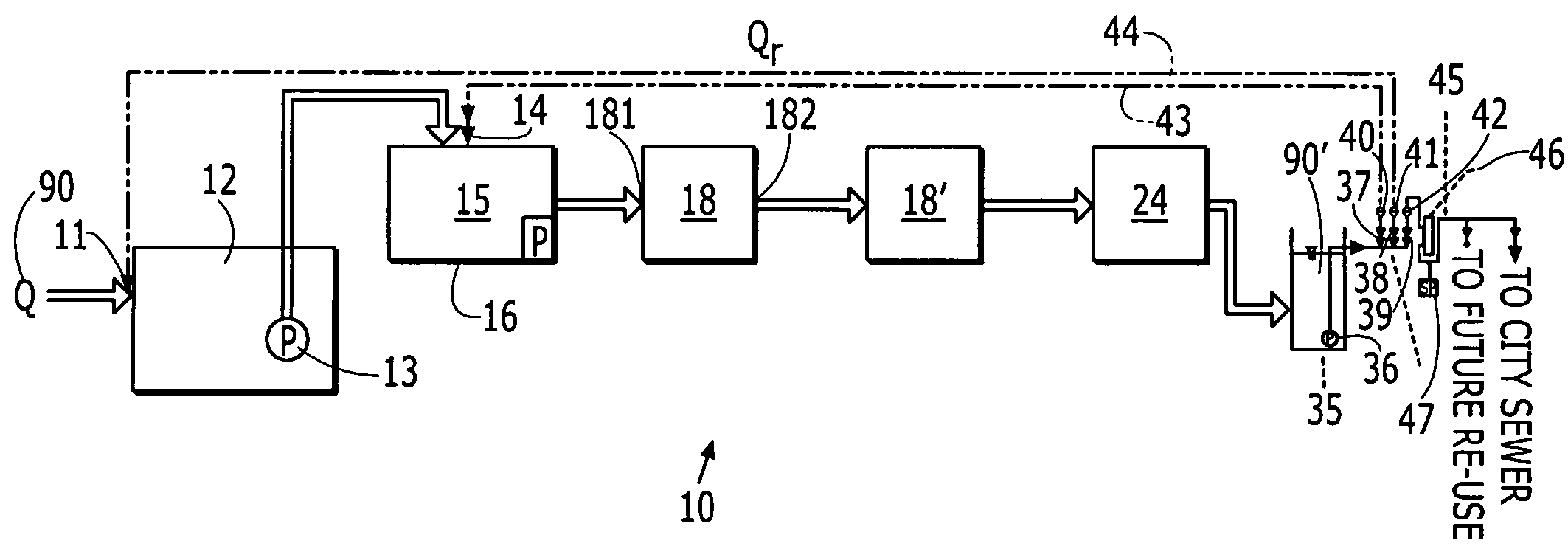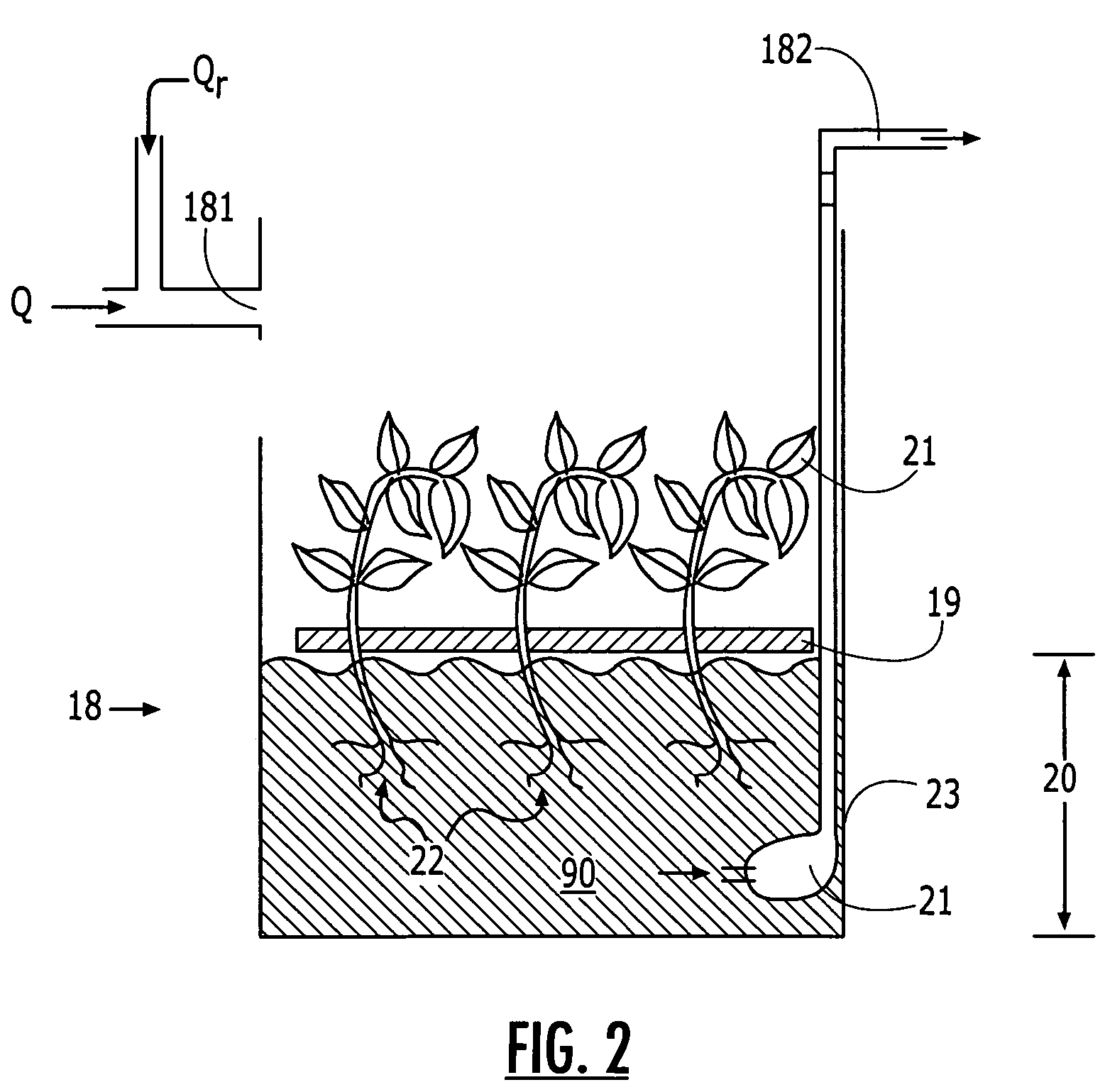Integrated hydroponic and wetland wastewater treatment systems and associated methods
a wastewater treatment system and integrated technology, applied in biological water/sewage treatment, water cleaning, multi-stage water/sewage treatment, etc., can solve the problems of large scale, large footprint, and frequent failure of systems, and achieve less land intensive, less land intensive, and reduced undesirable characteristics of influents
- Summary
- Abstract
- Description
- Claims
- Application Information
AI Technical Summary
Benefits of technology
Problems solved by technology
Method used
Image
Examples
first embodiment
[0041]A schematic of the present invention (FIG. 1) illustrates the flows through this system 10, beginning with wastewater influent 90 entering via an inlet 11 into a covered anaerobic reactor 12, which serves to perform an initial organic and solids removal. In this vessel 12 the solids from the influent 90 settle, and anaerobic bacteria feed on the solids and wastes in the liquid.
[0042]Following treatment in the anaerobic reactor 12 for a predetermined period, for example, in a particular embodiment 1.5 days comprises an exemplary retention time, the wastewater 90 is channeled via a pump 13 to the inlet 14 of an attached growth pretreatment filter 15. This filter 15 is at least intermittently exposed to atmospheric oxygen. The filter 15 achieves removal of organics and solids and denitrification.
[0043]Fluid is collected from the bottom 16 of the filter 15 and is pumped 17 to an inlet 181 of a first hydroponic reactor 18 (FIG. 2). Herein the term hydroponic reactor is taken to com...
second embodiment
[0056]In the invention, the system 50 (FIG. 4) comprises a pretreatment module 51, into which influent 90 is channeled and permitted to reside for a predetermined period. The wastewater 90 is then channeled to via a pump 52 to the inlet 14 of an attached growth pretreatment filter 15 as above. This filter 15 is at least intermittently exposed to atmospheric oxygen. The filter 15 achieves removal of organics and solids and denitrification.
[0057]Water from the filter 15 is transferred to a pair 53,54 of tidal vertical-flow wetlands (TVFW), each of which comprises alternating series of lagoons 55 and VF wetland cells 56. Each lagoon 55 (FIG. 2) is comparable to the hydroponic reactor 18 discussed above. Each lagoon 55 is adapted to maintain a population of grazing aquatic invertebrates, such as, for example, filter-feeding zooplankton.
[0058]Each wetland cell 56 comprises a module 24 as illustrated in FIG. 3. The wetland cell 56 has a depth 67 that is less than that 58 of the lagoon 55....
PUM
| Property | Measurement | Unit |
|---|---|---|
| particle size | aaaaa | aaaaa |
| height | aaaaa | aaaaa |
| porosity | aaaaa | aaaaa |
Abstract
Description
Claims
Application Information
 Login to View More
Login to View More - R&D
- Intellectual Property
- Life Sciences
- Materials
- Tech Scout
- Unparalleled Data Quality
- Higher Quality Content
- 60% Fewer Hallucinations
Browse by: Latest US Patents, China's latest patents, Technical Efficacy Thesaurus, Application Domain, Technology Topic, Popular Technical Reports.
© 2025 PatSnap. All rights reserved.Legal|Privacy policy|Modern Slavery Act Transparency Statement|Sitemap|About US| Contact US: help@patsnap.com



